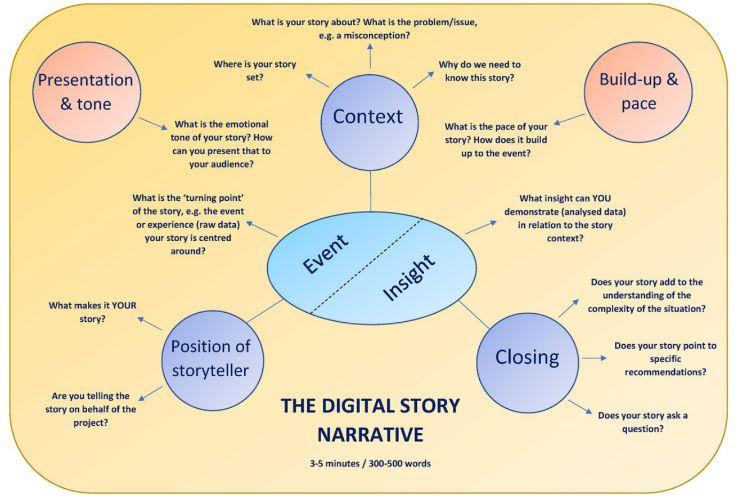According to Robin (2008), we can “find three types of Digital Storytelling:
- Personal Narratives: Character stories, memorial stories, stories about events in our lives, stories about what we do, and other personal stories (such as discovery stories, love stories, and recovery stories).
- Historical Themes & Events: These need to become more than electronic encyclopaedia entries but more of an engaging and insightful mini-digital documentary.
- Stories that Inform or Instruct: All digital stories inform or instruct. The distinction is that digital stories can be specially created to deliver specific learning content, covering all academic fields from math through to medicine.”

There are various narrative formats used to tell stories; each has specific characteristics and goals. These are just a few examples of narrative formats, and many stories may blend or experiment with multiple formats to create unique storytelling experiences. The choice of narrative format depends on the story’s goals, themes, and the desired impact on the audience.
Linear Narrative
This is the most traditional and straightforward format, where the story is told chronologically from beginning to end. It follows a linear progression of events, allowing the audience to experience the story in the order it unfolds.
Nonlinear Narrative
In this format, the story is not presented in chronological order. It may jump back and forth in time, use flashbacks or flash-forwards, or employ other narrative techniques to create a non-linear structure.
Multiple Perspectives
In this format, the story is told from the viewpoints of multiple characters. Each character provides their own perspective, thoughts, and experiences, offering a broader understanding of the events.
Web-based Stories
These are narratives presented through websites or web pages. They can incorporate multimedia elements such as text, images, audio, videos, and interactive features. Web-based stories often provide a non-linear structure, allowing users to explore the content in a non-linear or interactive manner.
Framed Narrative
Also known as a “story within a story,” a framed narrative involves a larger story or framework that contains one or more smaller stories. The outer frame provides a context or setting for the inner stories.
Episodic Narrative
This format presents the story as a series of self-contained episodes or chapters. Each episode may have its own mini-arc while contributing to the overall narrative.
Stream of Consciousness
This format attempts to replicate the continuous flow of thoughts, feelings, and perceptions of a character’s mind. It often lacks traditional punctuation, structure, or linear narrative progression.
Interactive Narrative
With the advent of interactive media, such as video games and choose-your-own-adventure stories, interactive narratives allow the audience to participate and influence the story’s direction. The choices made by the reader/player impact the outcome and branching paths of the narrative.
